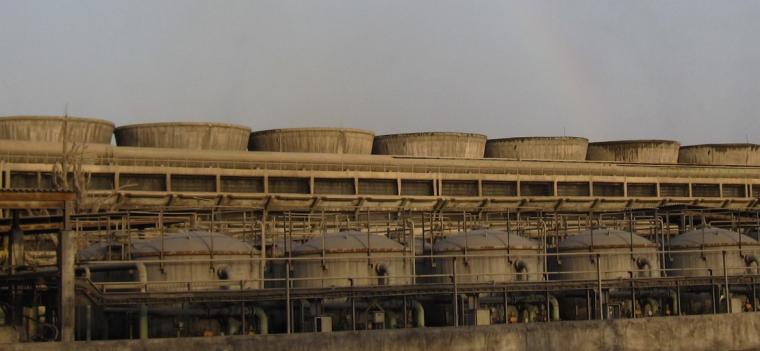News
Story Highlights
- South Asia faces challenges in water availability that will only grow with increasing consumption from a growing population and demands from other sectors such as energy and food.
- With support from the Energy Sector Management Assistance Program (ESMAP), the World Bank led a study and produced a report on Low Water High Growth in South Asian Economies that addresses the economic barriers and geographic constraints of sustainable water management in the region.
- Exploring the interlinkages among energy, water, and food security, the report quantified the economic benefits of improving water-use efficiency in South Asia and recommended alternative options for countries like India that could save significant amounts of water by using more efficient closed loop-wet cooling thermal power plants compared with their current systems.
Exploring the Energy-Water-Food Nexus to Address Water Scarcity in South Asian Economies
March 10 2016
South Asia faces serious challenges in water availability. And with the inextricable linkages between water and other sectors such as energy and food, increasing demand and consumption from a growing population will only worsen the situation. Climate change may further aggravate the stress on water resources with increasingly frequent and severe floods and droughts, and an increase in electricity production is also likely to exacerbate water scarcity in countries such as India, that use inefficient thermal power plants. Improved storage capacity and an appropriate energy mix are essential elements to achieving sustainable water resource management.
With support from the Energy Sector Management Assistance Program (ESMAP), the World Bank led a study that aims to support South Asia’s decision-makers in promoting policies that achieve higher levels of water efficiency, facilitate economic growth in the presence of water scarcity, and promote climate resilience to help farmers to maintain their income in the face of severe climate conditions. The study produced a report, Low Water High Growth in South Asian Economies that addresses the economic barriers and geographic constraints of sustainable water management in the region.
To properly model the links between water and economic activities, the Global Trade Analysis Project team at Purdue University developed for the study a computational general equilibrium (CGE) model, which uses economic and biophysical data to quantify the economic- and land-use implications of increased water scarcity for South Asia. The CGE model quantified the trade-offs from specific interventions in water and energy sectors, taking into account competing demands, such as agriculture or power generation, for limited resources—water, land, and labor—and their linkages to the supply and demand of goods and services.
Sustainable water resource management is essential in improving access to water and power in South Asia. The report finds that improving water-use efficiency should be the region’s first priority. South Asian economies can gain major benefits with improvements in water-use efficiency, meaning higher economic growth and lower water use. Returns from increased water efficiency in agriculture—the largest user of water region-wide—are the highest, but those from energy sector are crucial in moving towards an energy- and water-secure future in the region.
While examining the water availability problem across the South Asia region, the report puts a particular focus on India and Bangladesh because they are among the fastest growing economies in South Asia and represent about 89 percent of the region’s GDP and population. As such, policy changes in the two countries can set examples for the economies in the rest of South Asia in terms of combining sustainable water resource management and long-term sustained growth.
ESMAP funding helped kick start the cross-sectoral part of the study on the energy-water-food nexus.
“Looking at the energy-water-food nexus was a focal point of this study,” says Sebnem Sahin, Senior Environmental Economist. “Many countries in South Asia do not use water efficiently for irrigation, but low-cost changes can lead to positive results. Even a 10 percent improvement in water-use efficiency would increase food production and generate significant economic gains for South Asia.”
The report explored the interlinkages among energy, water, and food security in India and found that the country could save significant amounts of water by using closed loop-wet cooling thermal power plants, rather than the open-loop systems currently in use. Thermoelectric power plants boil water to create steam, which in turn spins turbines to generate power. Once steam has passed through a turbine, it must be cooled before being reused to produce more electricity. India’s open-loop systems draw large volumes of water for one-time use; closed-loop systems, on the other hand, reuse the cooling water in a second cycle and requires withdrawing less water. As part of the study, the Institute for Global Environmental Studies projected that India’s electricity sector’s use of total available water could grow from 4 percent to more than 10 percent by 2030 if the use of inefficient water cooling technology persists. For most of the country, using new efficient wet-cooling power plants will lead to major water saving, compared with current power plants.
As a follow up to the Low Water High Growth study, the World Bank team will focus on analyzing the pollution-poverty-water nexus at the state and district levels in South Asia, starting with India, Bangladesh and Pakistan. Select pilot studies at these sub-regional levels aim to support and promote environmental policies for water security in South Asia. Pilot cases will aim to explore options to reduce water demand in electricity generation such as alternative cooling systems (e.g., dry cooling) and alternative water sources (e.g., wastewater).
